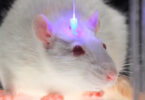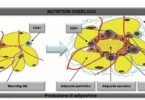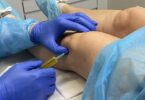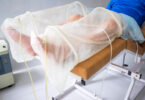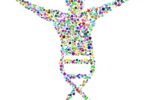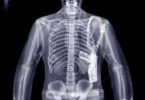Forensic or Legal Odontology, as a fair and precise science
FORENSIC OR LEGAL ODONTOLOGY. THROUGH CERTAIN PROCEDURES, MULTIPLE AND COMPLICATED CASES OF DEATH CAN BE ESTIMATED.
Forensic Dentistry corresponds to the relationship between dentistry and Justice, a relationship that is expressed in different techniques and all under solid professional training.
Forensic odontology is also It is also defined as the branch of medicine that applies all the medical and biological knowledge necessary to resolve the problems posed by law. For this reason, forensic odontology has been very useful over time as part of the identification of victims, attackers and still unidentified corpses, especially in natural disasters and homicides.
This science allows for the proper handling and examination of dental evidence and the proper evaluation and presentation of dental findings in the interest of justice.
It is important to highlight that the professor, writer, scholar, polyglot, researcher, inventor, precursor and creator of Legal Dentistry, a science to which he made countless contributions, such as his masterful work “Dental Art in Legal Medicine” was: Oscar Luís Amoedo . and Valdez, (1863-945).
Forensic or legal odontology is responsible for studying dental evidence, as well as the evaluation and presentation of dental findings that may be of interest to the justice system.
That is why this field is very important and covers relevant topics for judicial investigations such as: age rulings, collection of dental evidence in sexual crimes, child abuse, professional responsibility, among others.
Likewise, dental identification is important and an inclusive finding is known as any element reported in the ante-mortem record, and that is undoubtedly found in the corpse, for example: the absence of the same tooth; the presence of a dental prosthesis with the same design, among others.
Forensic, Legal or Expert Medicine is part of the so-called medical-social disciplines, since its objective transcends man as an individual to extend to the social context, either due to its impact in the judicial field, or simply due to its effect in any area. administrative.
The fields of action of forensic odontology: It is based on the study of bite marks in physical or sexual assaults, both of the victim and the aggressor. Assessment of bodily harm in assaults, traffic accidents, voluntary assaults, etc. Assessment of bodily harm due to malpractice. Issuance of reports or expert opinions.
The procedures used in forensic odontology allow the removal of traces through the application of techniques such as cheiloscopy, bite marks, registration of palatal rugae, dentoalveolar trauma, dental biochemistry, methods of chronological estimation of the patient’s age, prosthesis marking.
According to the aforementioned, we can define two work disciplines of forensic odontology, taking into account the type of analysis that is carried out:
The dental necropsy whose main purpose is to discover evidence related to the cause of death and date, as well as the reason for death.
On the other hand, dental identification can be carried out through the comparison of data before and after death.
Forensic odontology reaches fundamental importance worldwide, managing, through certain procedures, to estimate the time and date of death of a person, facilitating the resolution of multiple and complicated cases of death.
Through human bite marks, they are impressions or blunt or incised injuries, produced by the dental arches, which are caused by pressure or traction.
The study of a bite identifies the author, the etiology, the classification and the particularities of each print. It allows us to determine who the subject under investigation is, that is, his identity, what has led him to commit an illegal act or any other antisocial offense. Likewise, it allows us to find out the name of the subject and what life dynamics they were leading up to the time of the study.
There are six branches of forensic science: This branch applies anatomical sciences to criminal law. These scientists analyze the remains of human skeletons to assist police and security forces in investigations.
The identification systems and instruments used by forensics are:
- Forensic photography,
- video recording,
- planimetry and
- written description.
- overalls-gloves-masks-safety glasses, forensic and ultraviolet lights, ultrasonic laser meters, electronic calipers, mechanical developers-brushes-survey labels, presumptive tests for biological clues (luminol).
Types of dental specialists
- General dentist.
- Pediatric dentist.
- Orthodontist.
- Periodontist or gum specialist.
- Endodontist or root canal treatment specialist.
- Oral pathologist or oral surgeon.
- Prosthodontist.
A health care professional who has special training in caring for teeth, gums, and other tissues in the mouth, also called dentist.
Aesthetic dentistry is the specialty of dentistry aimed at solving problems related to the appearance of the mouth. The objective is to maintain the natural beauty of the teeth and achieve a more beautiful and harmonious smile, through simple, painless and short-term treatments.
FONT
https://es.wikipedia.org/wiki/Odontolog%C3%ADa_forense
https://www.lasallebajio.edu.mx/revistas/exlege/pdf_6/exlege_06_art_07-gutierrez_enriquez.pdf
OTHER ARTICLES THAT MAY INTEREST YOU
Advance in pharmacology, for diseases such as Alzheimer’s.
What are artificial or synthetic hormones used for?


